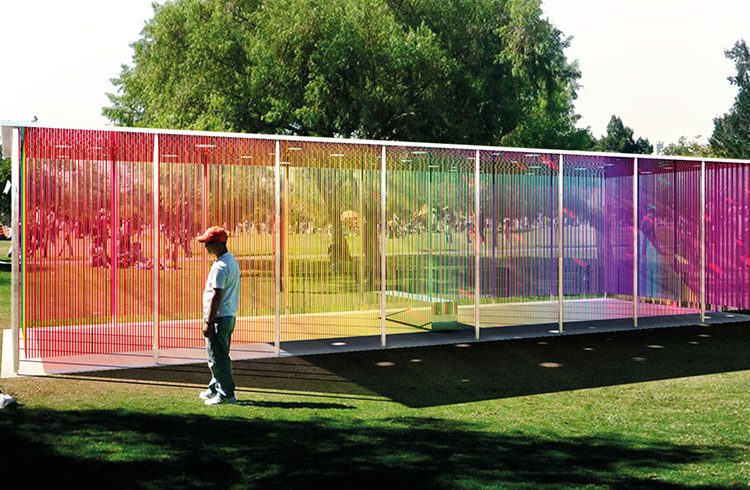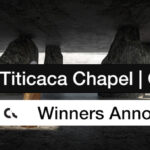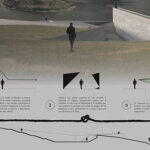Quechua Architecture Competition,Q.A.C., welcomes all participants to take the 1 week challenge which consists in presenting and developing a project that explores diverse fields of thinking and design. The challenge for this occasion is “Shadow Pavilion”.
Light has been through time an important guide for humanity, sometimes it has even been attributed as a god in some religions or the strength of legendary heroes; architecture is not strange to this history.
From the Pantheon to the La Tourette Monastery, light has been present in the mind of architects for centuries and to this day remains as important as has ever been. In this occasion, we select one of the most interesting cities where light is an important matter of studies for designers because of the position of the city in the globe: Quito, Ecuador.
Q.A.C. thanks and admires all designers who are willing to take the challenge.
1st Prize
Project by: Lucas Zabeu Cunha
from Brasil
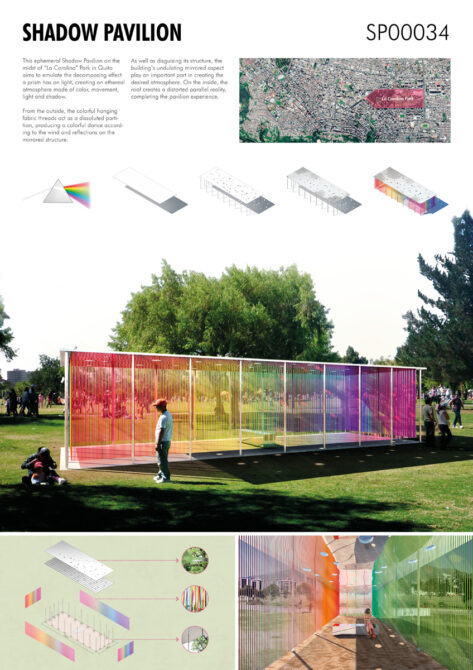
This ephemeral Shadow Pavilion on the midst of “La Carolina” Park in Quito aims to emulate the decomposing effect a prism has on light, creating an ethereal atmosphere made of color, movement, light and shadow.
From the outside, the colorful hanging fabric threads act as a dissoluted partition, producing a colorful dance according to the wind and reflections on the mirrored structure.
As well as disguising its structure, the building’s undulating mirrored aspect play an important part in creating the desired atmosphere. On the inside, the roof creates a distorted parallel reality, completing the pavilion experience.
Honourable Mention
Project by: Andrés Ramos, Sofía Montiel, Nathaly Landeta, Xavier Verdugo
from Ecuador

La montaña del Panecillo o Yavirac es el lugar de emplazamiento para el pabellón, pues marca un hito en la historia del territorio de la ciudad, y ha significado a lo largo de los años un lugar sagrado, de culto, y de reflexión humana. Se busca por medio de este escenario de la luz, resignificar el valor del territorio y la geografía de la ciudad. Sin embargo, el proyecto puede ser emplazado en otros puntos de la urbe sin perder su esencia mística, pues su estructura metálica, pensada para ser ligera y transportable, es de construcción muy sencilla.
Honourable Mention
Project by: Shauni Priyam, Noshin Siara, Muntasir Hasan,
from Bangladesh
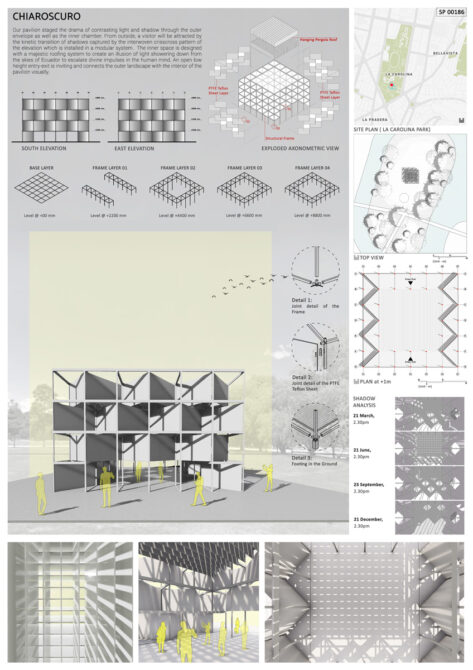
Our pavilion staged the drama of contrasting light and shadow through the outer envelope as well as the inner chamber. From outside, a visitor will be attracted by the kinetic transition of shadows captured by the interwoven crisscross pattern of the elevation which is installed in a modular system. The inner space is designed with a majestic roofing system to create an illusion of light showering down from the skies of Ecuador to escalate divine impulses in the human mind. An open low height entry-exit is inviting and connects the outer landscape with the interior of the pavilion visually.
Honourable Mention
Project by: Sergio Cassane, Valentina Cabrera, Chile
from Chile
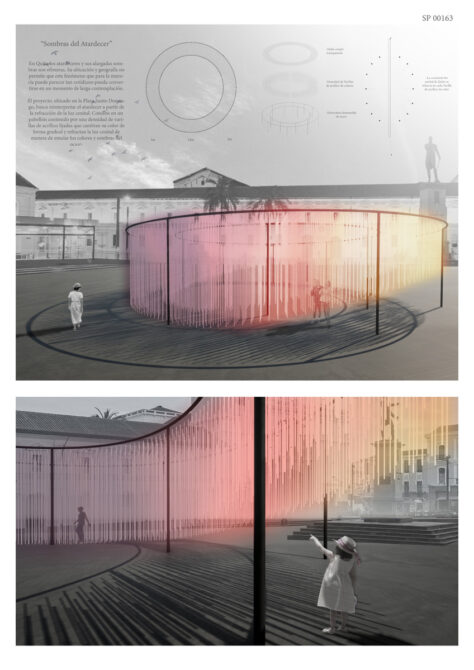
En Quito los atardeceres y sus alargadas sombras son efímeras. Su ubicación y geografía no permite que este fenómeno que para la mayoría puede parecer tan cotidiano pueda convertirse en un momento de larga contemplación.
El proyecto, ubicado en la Plaza Santo Domingo, busca reinterpretar el atardecer a partir de la refracción de la luz cenital. Consiste en un pabellón contenido por una densidad de varillas de acrílico que cambia su color de forma gradual y refractan la luz cenital de forma de emular los colores y sombras del ocaso.
Honourable Mention
Project by: Mauricio Mendez, Edison Araguillin
from Bolivia
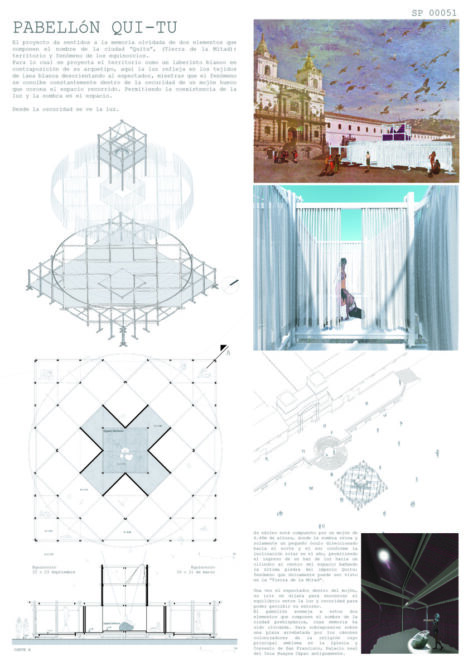
El proyecto da sentidos a la memoria olvidada de dos elementos que componen el nombre de la ciudad “Quitu”, (Tierra de la Mitad): territorio y fenómeno de los equinoccios.
Para lo cual se proyecta el territorio como un laberinto blanco en contraposición de su arquetipo, aquí la luz refleja en los tejidos de lana blanca desorientando al espectador, mientras que el fenómeno se concibe constantemente dentro de la oscuridad de un mojón hueco que corona el espacio recorrido. Permitiendo la coexistencia de la luz y la sombra en el espacio.
Desde la oscuridad se ve la luz.

